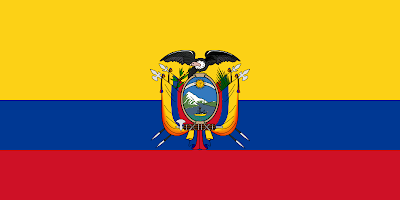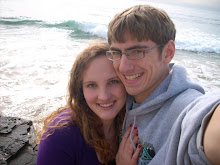
My Spring Break travels this year took me across the Midwest. They began Saturday, March 7
th, at the Lincoln airport, where my 2:40pm flight was delayed until about 5:40pm. This also happened to be the exact time at which my connecting flight in Chicago was departing. So after my late arrival in Chicago I sat in the airport until about 11:40pm, when I finally caught a Standby flight to South Bend, IN. However, my bag ended up in Grand Rapids, MI, and I did not see it again until Wednesday, March 11
th.

I finally arrived at my home in
Stevensville, MI at about 3:40 AM (that' with the time change). I spent the night there and then took off again the next day for Upland, IN.
The drive from Stevensville, MI to Upland, IN is about 3 hours through mostly rural country towns. It had been raining a lot that week so there was a lot of flooding in the fields along the highway. I arrived safe at in Upland at Taylor University (the picture shows Taylor's library and Bell Tower) where I was able to spend sometime visiting my boyfriend of 5 years, Peter. (He's the guy in the profile picture :-) with me). We had lots of fun together going out for dinner, playing cards, and watching a movie. I also got to listen to his Chorale practice and hear his worship band play at a Veteran's Hospital in Marrion, IN.

Tuesday of Spring break, I headed home and spent the remainder of the time visiting my family and friends. It was nice to see my parents and my brothers. My whole family does Tae Kwon Doe, so I got to watch my brother P.J. (who is testing for black blet this summer), and practice with my brother Jacob and my parents. The picture below is of the studio where we take lessons, but none of us are in this picture. One Thursday I got to spend time with my friend Laura, who is getting married the summer of 2010. I'm her maid of honor, so we went over lots of wedding plans and had a great time. Laura lives in Baroda, MI (check the of Southwest Michigan above) and we went to high school together.

Friday, I had breakfast in St. Joseph, MI with my friend Alison, who I've known since middle school. It was nice to catch up and we enjoyed homemade bagels at the cute Broad St. Cafe, which had been the original firehouse in St. Joseph. This is not us in the picture, but you have see the old
firepole and the
largewindow used to be the garage door for the firehouse.

Saturday I went to a ladies tea at The Chapel with my mom, Laura and her mom, and my boyfriend's mom, Mrs. O'Neill. Then, that evening, my friend Sydney, who I've also known since
middleschool went with my family and I to Kalamazoo, MI to see Brian Regan, a clean and hilarious comedian. (Here's a link to his site:
http://www.brianregan.com/) This is a picture of the inside of the State Theater in Kalamazoo where we were at.

Sunday, I went to church, packed up, and had one last amazing
homecooked meal with my family. We had homemade mashed potatoes, prime rib roast, and fresh green beans. It was delicious! Then I went back to South Bend, and had smooth travels all the way back to Lincoln, and then Seward. It was really nice to be home and have a break; I didn't want it to end. Summer isn't too far away, so I guess I can finish out the semester.
































